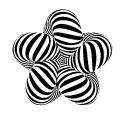

Welcome to the Growery Message Board! You are experiencing a small sample of what the site has to offer. Please login or register to post messages and view our exclusive members-only content. You'll gain access to additional forums, file attachments, board customizations, encrypted private messages, and much more!
|
 NobodyImportant NobodyImportant
Science Is Subculture
 


Registered: 05/03/08
Posts: 4,981
Loc: Jawjuh.
Last seen: 11 years, 9 months
|
|
except maybe melting down smack in a spoon with a laser 
--------------------
 
Glass By: US Tubes, ZOB, Roor.de, Sheldon Black, Jerome Baker, Medicali, Kennaroo, Sand, Alex K, Local and Unknown Artists
|
 Dr. Siekadellyk Dr. Siekadellyk
Question Everything!
 



Registered: 04/20/09
Posts: 9,366
Loc: Ketamine 
|
|
ahaha...
being able to light M80's on your neighbors porch from a distance in the rain while its windy cuz your bored and stoned....
--------------------
The Kratom Report...
|
 Lucid Lucid
Monster Plant Creator
 


Registered: 07/18/08
Posts: 1,082
Loc: Canada-ish. 
Last seen: 8 years, 6 months
|
|
ya.. they only are powerfull enough to burn things from a few feet max.
|
 Dr. Siekadellyk Dr. Siekadellyk
Question Everything!
 



Registered: 04/20/09
Posts: 9,366
Loc: Ketamine 
|
 Re: Laser TAG Graffiti Re: Laser TAG Graffiti  [Re: Lucid] [Re: Lucid]
#428806 - 06/04/10 04:38 PM (14 years, 8 months ago) |
|
|
I believe it depends on the strength of the diode and how much power your feeding it...
--------------------
The Kratom Report...
|
 Triptonic Triptonic



Registered: 06/13/08
Posts: 15,581
Loc: 
|
|
I want to be able to light peoples houses on fire, how much power would that take?
|
 RasJeph RasJeph
Psycho Pete



Registered: 01/14/09
Posts: 11,657
Loc: Bumfuckt Egypt
Last seen: 1 year, 3 months
|
|
Quote:
Dr. Siekadellyk said:
I believe it depends on the strength of the diode and how much power your feeding it...
Bingo on the first part.
It also depends on the beams divergence I think...or, the beams radius. For example, my friends laser is like the radius of a sewing needle. His was like $200. Mine was $50. Mine is about a match-width. His can pop balloons from like 20 feet away, mine can only pop from like 5 feet.

--------------------
Of course it's happening inside your head.
Why should that mean it isn't real?
|
 Inverted Inverted
CNC Machinist/Greenthumb
 


Registered: 06/01/08
Posts: 9,953
Loc: North Star 
|
 Re: Laser TAG Graffiti Re: Laser TAG Graffiti  [Re: RasJeph] [Re: RasJeph]
#428842 - 06/04/10 05:49 PM (14 years, 8 months ago) |
|
|
Yes, divergence is the key.
It's the measure of the radius of the beam at a given distance from the diode. The further from the diode, the larger the beam will get, and the measurement of this angle, like this: Diode-< I know it's crude but you can get the idea of what I mean. The less a beam spreads the smaller it's divergence and the more powerful it will be at longer distances and will also travel farther to the naked eye.
Here's what wiki says
Beam divergence
From Wikipedia, the free encyclopedia
Jump to:navigation, search
The beam divergence of an electromagnetic beam is an angular measure of the increase in beam diameter with distance from the optical aperture or antenna aperture from which the electromagnetic beam emerges. The term is relevant only in the "far field", away from any focus of the beam. Practically speaking, however, the far field can commence physically close to the radiating aperture, depending on aperture diameter and the operating wavelength.
Beam divergence is often used to characterize electromagnetic beams in the optical regime, for cases in which the aperture from which the beam emerges is very large with respect to the wavelength. That said, it is also used in the Radio Frequency (RF) regime for cases in which the antenna is operating in the so-called optical region and is likewise very large relative to a wavelength.
Beam divergence usually refers to a beam of circular cross section, but not necessarily so. A beam may, for example, have an elliptical cross section, in which case the orientation of the beam divergence must be specified, for example with respect to the major or minor axis of the elliptical cross section.
The divergence of a beam can be calculated if one knows the beam diameter at two separate points (Di, Df), and the distance (l) between these points. The beam divergence is given by
Divergence=2 \arctan\left(\frac{D_f-D_i}{2 l}\right).
If the beam has been collimated using a lens or other focusing element, the divergence expected can be calculated from two parameters: the diameter, Dm, of the narrowest point on the beam before the lens, and the focal length of the lens, f. The divergence is then given by
Divergence=\frac{D_m}{f}.\,
Like all electromagnetic beams, lasers are subject to divergence, which is measured in milliradians (mrad) or degrees. For many applications, a lower-divergence beam is preferable. Neglecting divergence due to poor beam quality, the divergence of a laser beam is proportional to its wavelength and inversely proportional to the diameter of the beam at its narrowest point. For example, an ultraviolet laser that emits at a wavelength of 308 nm will have a lower divergence than an infrared laser at 808 nm, if both have the same minimum beam diameter. The divergence of good-quality laser beams is modeled using the mathematics of Gaussian beams.
--------------------
Don't criticize what you can't understand
| |
|
|
|
|